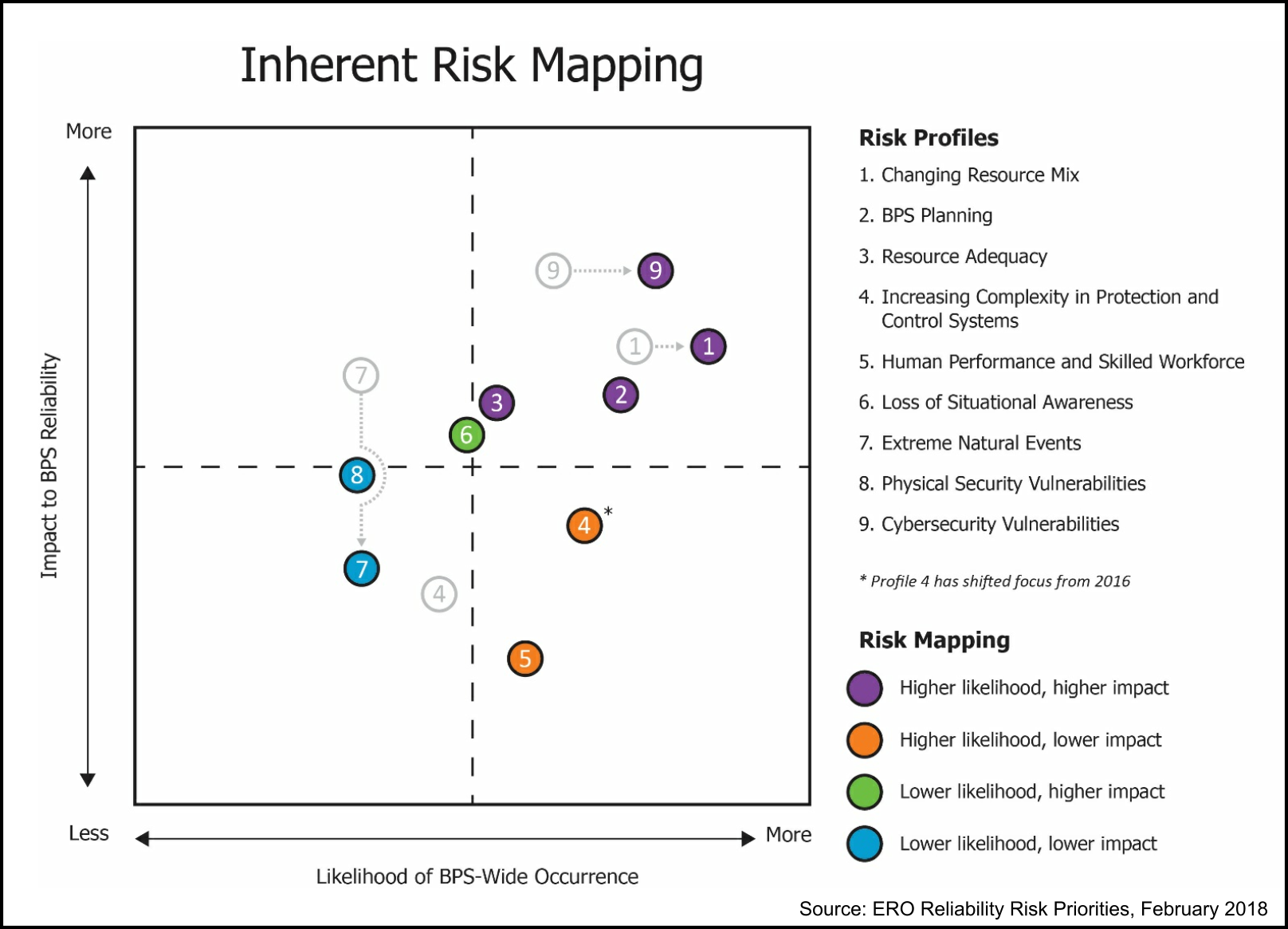Minimizing Facility Electricity Risks (Part 1)
Posted on December 3rd, 2018Risk management is a never-ending task for facility owners and managers. Today, electricity-related issues are high on the list of risks for facilities: increasing energy costs, an aging electrical infrastructure, restructuring of the utility business model, renewable energy mandates, rapid technology changes and cybersecurity issues. Moreover, the magnitude, velocity and potential impact of changes to the electricity-supply industry exacerbate facility risk management challenges.
This is the first of a 2-part series. This first part examines the risks to the electricity supply and the second part will look at the options facility managers have to manage electricity-supply risks.
Electricity Risks Ahead
The North American Electric Reliability Corporation (NERC) oversees the reliability of all aspects of the bulk power system (BPS): what is commonly called “the grid”. The BPS includes the interconnected international electrical system of generation and transmission (>100 kV) plus all the utilities, infrastructure and control systems that deliver electricity to more than 334 million people in the U.S., Canada and parts of Mexico. A critical part of NERC’s oversight is an annual assessment identifying and prioritizing the risks to the reliability of the bulk power system.
Shown is NERC’s 2018 risk assessment map. The horizontal axis shows the likelihood of grid-level problems occurring and the vertical axis shows the potential severity of such problems. Arrows show the change from the 2017 assessment. Item #4 shows no arrow since its position change was due to a modification of the risk definition.

Of the highest priority issues (1,2,3 & 9), risks (1), (2) and (3) are highly interrelated with respect to rapid changes in the electric utility business model: the decentralization and changing mix of the electrical generating capacity.
The changing resource mix risk (1) has the highest likelihood of occurrence. It represents the risk presented by the shifting of electricity generation away from fossil-fueled power plants and towards renewables such as solar and wind. This risk is driven primarily by two factors:
- The difficulty of maintaining grid stability when very large and rapid electricity supply swings occur such as large storms causing the quick shut down of substantial wind and solar generating capacity, and
- The uncertainty, based on limited evidence, that a high percentage of wind and solar (inverter-based) generating systems might trip offline when needed most: during electrical system upsets or transients.
Risks (2) and (3) relate to the operation and development of new electrical generating capacity. More-and-more, decisions such as size, type, location and operation of new generating resources are made by independent entities other than utilities and grid operators. Often, these entities and the generating capacity they control falls outside the authority of NERC and those responsible for the BPS. This leads to uncertainty about having adequate total generating capacity as well as uncertainty about the operational availability and outage scheduling for a large percentage of the total generating capacity.
Cybersecurity vulnerabilities (9) are just that: a bad actor attacking power plant, transmission or control systems via software and the Internet.
Risks – Electricity vs Natural Gas
While NERC isn’t responsible for overseeing the natural gas supply, they do recognize that the increasing reliance on natural gas to generate electricity elevates the risk to the BPS should there be a major disruption in the natural gas supply system. Fortunately, however, the reliability of the natural gas supply system is orders of magnitude higher than that of the electricity system.
As noted in the Massachusetts Institute of Technology’s study for the Department of Defense, “Interdependence of the Electricity Generation System and the Natural Gas System and Implications for Energy Security:”
The natural gas network has few single points of failure that can lead to a system-wide propagating failure. There are a large number of wells, storage is relatively widespread, the transmission system can continue to operate at high pressure even with the failure of half of the compressors, and the distribution network can run unattended and without power. This is in contrast to the electricity grid, which has, by comparison, few generating points, requires oversight to balance load and demand on a tight timescale, and has a transmission and distribution network that is vulnerable to single point, cascading failures.
In addition to the advantages of the natural gas system (NGS) compared to the electricity supply sytems described, other advantages include:
- The majority of the NGS is underground making it far less vulnerable to weather and disasters while nearly all electric transmission lines are aboveground
- Large quantities of stored natural gas are readily available while no similar storage of electricity is possible, today
- Many compressors on the natural gas system run on natural gas, independent of the electrical system
- The natural gas system has many redundant pipelines and circular distribution piping systems. Many parts of the electrical system have no similar redundancy
Minimizing Electricity Risks
Problems with electrical reliability and resiliency are very real and often impact facility operations. While NERC suggests that the risk from extreme natural events has decreased, it’s hard to overlook the electrical problems posed by hurricanes, flooding, high-wind events, wildfires and even icestorms. In addition, NERC indicates some of the more critical electricity supply risks are self-inflicted ((1), (2) & (3) above) and of increasing concern.
In second and final installment of this series, we’ll look at the options facility managers have to minimize the electricity-supply risks for facilities.
